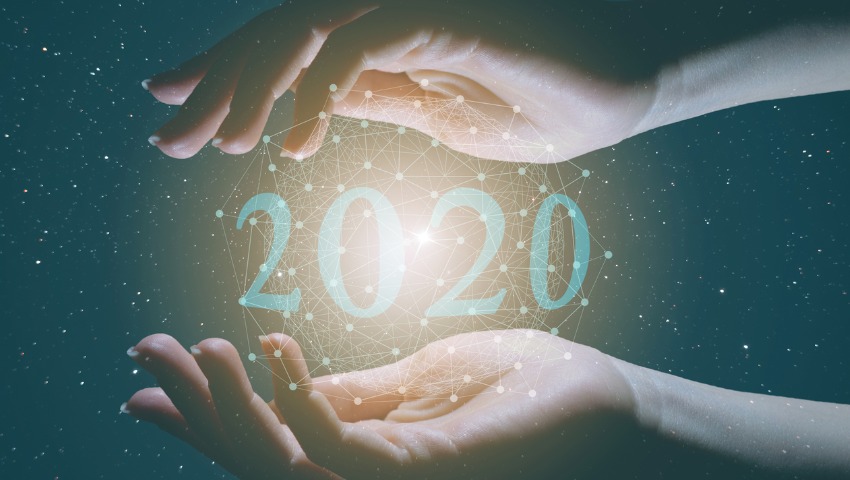Nearly 60 percent of planners surveyed said that they would be taking steps to address environmental issues at their events, according to the 2020 Events Trends Report recently issued by Eventbrite.
The survey included feedback from 6,800 event and experience planners worldwide—one-third of them from North America—to find out their expectations for 2020. Planners expressed more satisfaction with their jobs and indicated they’re focused on sustainability, inclusivity, and upping the original and immersive nature of their events. The biggest challenge they face is finding ways to involve more attendees.
Overall, the findings present insights into taking no “green” initiative for granted, navigating the needs of an evolving, diverse market and deconstructing the hot term “experiential.”
Sustainability, Seriously
The happy shock this year for Mother Earth is that while the 2019 survey showed a mere 6 percent of respondents thought environmental responsibility would impact their events, this year 59 percent said that they were upping the eco ante.
Now that it’s apparent sustainability is no longer a niche marketing tactic, but rather an imperative responsibility, just how do you get greener? Here are a few guidelines from the report.
- Check that your venues have policies for energy efficiency, recycling, and waste minimization
- Organize refuse stations into compost, recyclables, and trash
- Glitter particles are micro-plastics that get washed into the ocean. If you’re using it, choose biodegradable, eco-friendly glitters like Glitterevolution or Mermaid Magic.
- Consider ways in which your food, drinks, and swag could use less packaging and rely on less on plastic
- Work with food and drink vendors with a commitment to sustainable practices
- Communicate your green policies to attendees and be transparent about all the actions you’re taking to reduce impact
Doing It, and Doing It, and Doing It Differently
Inclusivity covers a lot of ground—there are many separations to un-separate, from racial designations and gender roles to physical abilities and dietary needs. Smart Meetings’ February feature story, “Accommodate All,” includes a few facts that point to the growing need to diversify.
• Fifty-two percent of 13- to 20-year-olds don’t identify as exclusively heterosexual, compared to 35 percent of millennials aged 21 to 34.
• The United States will be a “minority white” country by 2045, according to the U.S. Census Bureau.
• An estimated 26 million Americans have food allergies.
Forty-eight percent of planners surveyed by Eventbrite intend to diversify through speakers, talent and subject matter. “It’s not just about inviting more people to the table; it’s about making everyone feel welcome,” the report says.
Just What Does Experiential Mean, Anyway?
You’ve probably been hearing the term “experiential” a lot. It just means having to do with an experience, so isn’t everything you attend in person “experiential?”
Semantically, yes—but tell that to the last group of people who sat in front of a podium speaker being talked at for 90 minutes. You know the demand for that kind of set-up is bygone, just like Blackberrys and taxi cabs. They still exist and might be useful in some situations, but we have other options.
In tandem with experiential is the word “immersive,” which rings in with a little more energy because immersion—becoming a full, integral part of something—is what you really want for attendees. The report found that audiences want to deeply engage with subject matter. That means shaking people out of the ho-hum, providing novel experiences, fostering interchange and sparking conversation. Visual appeal, engaging all the senses and creating a temporary (or maybe lasting) community at an event are all ways to ensure your audience will remember you in the morning.
More Attendees for Less Money
The biggest challenge planners related was reaching new attendees, followed by insufficient budget and ticket sales. This suggests a marketing problem—how to bring in more people for less money? One of the answers is a natural result of making experiences immersive. Respondents indicated that the most effective form of event promotion is word of mouth. If your event is a can’t-miss, if it successfully creates a deep and engaging feeling in attendees, they will talk about it.
Another asset that comes from your devotion to Instagrammable moments is social media marketing at its finest—user-generated content. This means videos, photos and streaming generated by your audience, when they’re so hyped about being a part of your event that they can’t wait to share it. That’s a big deal, as the report indicates that such content is more trusted than what’s produced directly by a brand.




